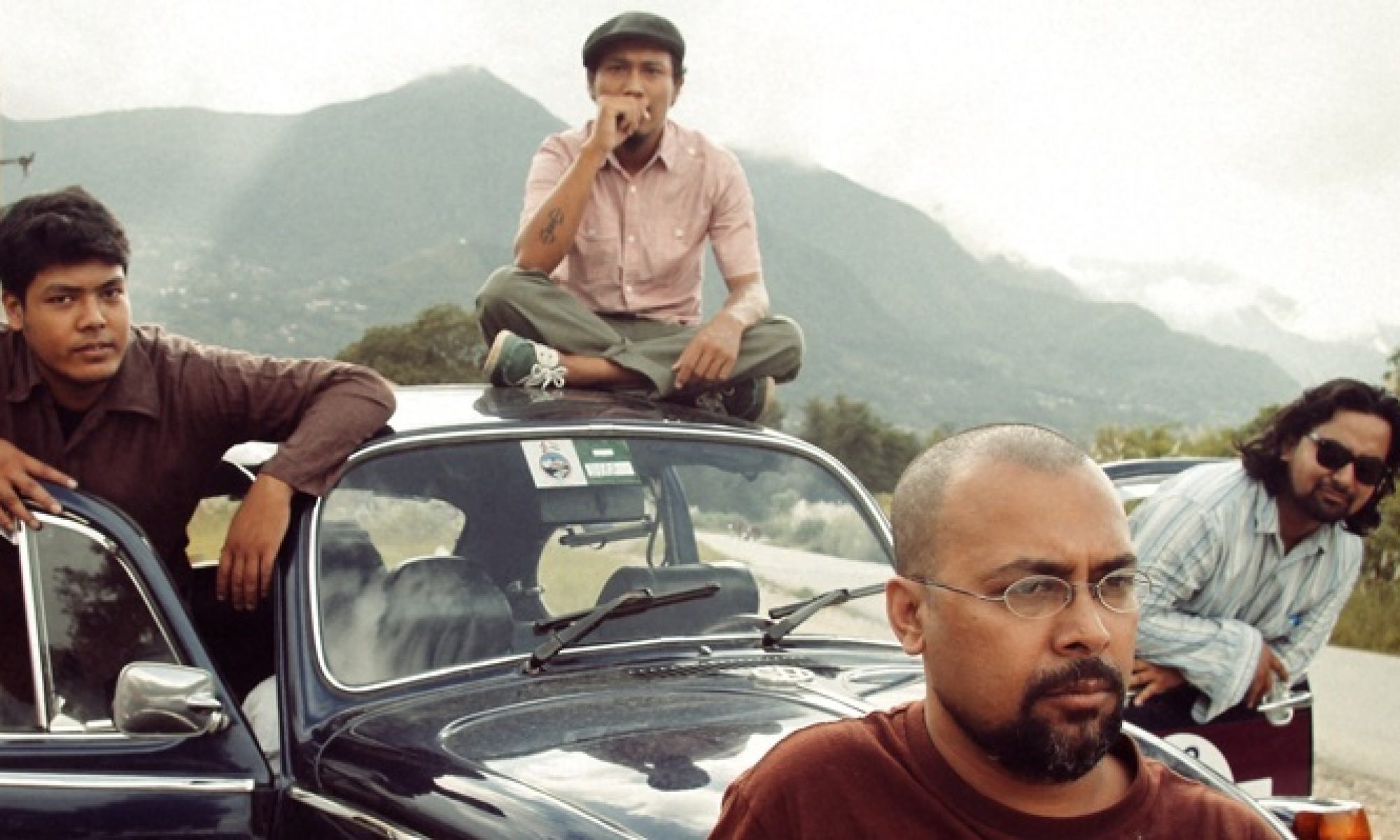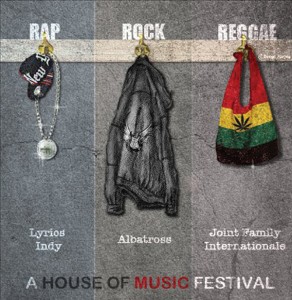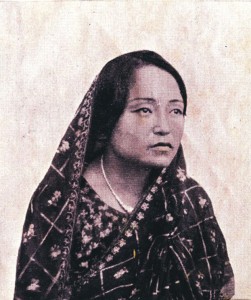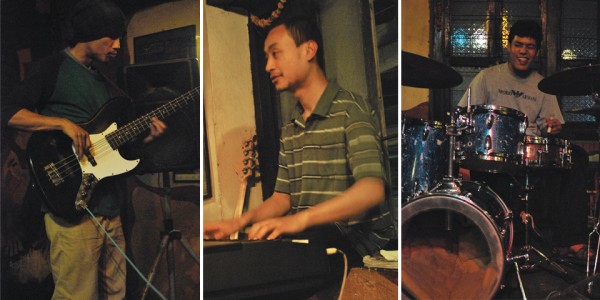
— Ofelia T. Sta. Maria
Outside a small, nondescript bar in Thamel, a tourist district in Kathmandu, Nepal, is a handwritten window sign saying ‘live jazz.’ Not exactly a conventional sight in a place dotted with souvenir shops, trek agencies, and guest houses’a stretch of street where life seems fleeting, hundreds of voices speak in different languages, and a cavalcade of travelers will eventually leave at one point.
I entered Full Moon bar, and knowing Thamel to be a place for tourists and backpackers, assumed that it would be filled with foreigners like me. I was right, but the sight of a local audience was a welcome reprieve and presented a positive omen. The atmosphere offered a stark contrast to the transient bustle of outside ‘hued cushions and pillows to sit on, incense sticks burning in corners, cigarette smoke rising from ash trays, opened windows inviting the cool wind of spring, beer bottles, glasses of alcohol. While outside Thamel was all about passing and moving, inside Full Moon, it said SIT.
The place was very interesting, not only because I was there as a tourist, but because I hadn’t really gone to similar events in the Philippines. I did not know what to expect.
Jazz in Nepal
Coexisting with Nepal’s already rich culture is an underrated music scene that deserves attention and appreciation from listeners all over the world. On my visit to Full Moon, I met Abhisek Bhadra, keyboardist of jazz group JCS Trio (with Jigmee Dorgee Sherpa on bass and Kiran Shahi on drums), the band playing that night. I’m not an expert on jazz, but the moment I went inside, I knew that these guys were good.
Abhisek said that the jazz scene in Nepal is slowly gaining ground. It only started to develop about five years ago, when there were only about two bands playing jazz music, ‘and not many people who attended those gigs,’ he said.
‘It’s hard enough making a living out of music in Kathmandu and it’s definitely harder making a living by playing jazz. There aren’t many bands who’ve made jazz records here,’ he admitted. There is, however, a lot of improvement’which shows that the scene could only get better.
He told me about the Kathmandu Jazz Conservatory, a major initiative that helped jazz bloom in the country: ‘It was founded by Mariano Abbelo, a Spanish music educator. He was able to bring teachers from abroad to teach students here, and he’s still doing the same.’ This school benefits artists like Abhisek, because he gets to teach kids how to play’while currently training at the conservatory, he teaches guitars, keyboards, and music technology at the British School in Kathmandu.
Today, there are weekly jazz gigs in different venues in Kathmandu, and occasional jazz festivals, which I unfortunately missed. He mentions ‘Jazzmandu,’ an annual jazz festival that gathers musicians from all over the world. ‘The festival started about six years ago. It wasn’t very big back then but now [the number of] people attending this festival has grown,’ he says.
Learning about all of these things, I reckoned that the jazz scenes in the Philippines and in Nepal are very much similar.
Jazz in the Philippines
The influx of new music in the Philippines could make it a bit trickier for jazz, partly because it’s become clear that it is one of those genres that is not easily and immediately appreciated by everyone’an acquired taste as some would call it’and partly because the dominant music we have for the youth in Manila commonly leans more towards rock and pop.
‘No matter which decade we’re talking about, jazz has always been considered an elite music,’ said Collis Davis, one of the producers of the documentary ‘Pinoy Jazz: The Story of Jazz in the Philippines.’
He also believes that we are currently living in a time where jazz is not as well-received in the country as it should be. ‘Listening to what I would like call real jazz is more demanding of the listener’s intellect, especially when it comes to following the spontaneous, often brilliant logic of improvisation composed on fly on a theme or on a song’s harmonic structure,’ he explains.
He also suggests that guidance is an essential component in finding out what jazz is all about, and that it could be difficult for new listeners to look for a good introduction’it is possible that they get the ones that are ‘either too abstract or, if it’s conventional jazz, poorly executed.’ Educating oneself with sound is clearly one of the things that jazz listening requires. ‘Where it needs to be taught is at the high school level while young minds are still receptive to new ideas and the performing arts in general,’ he added.
‘Usually, the way one learns to listen and enjoy jazz is to associate with folks who are already into the music. They can serve to introduce the novice into how to listen to jazz, and share recordings by the jazz masters to enable the novice to engage with the best examples in the history jazz. This is key’introducing novice listeners to excellence in improvised music, either American or Filipino in origin guarantees their life-long dedication to the music.’
Filipino Jazz music made for and by younger generations has been doing pretty well for years. Artists such as The Radioactive Sago Project, Mishka Adams, SinoSikat?, Nyko Maca, and Mike’s Apartment each have their own distinctive jazz sounds, providing listeners with new approaches and fresh technique on the old tradition. The recently-concluded Philippine International Jazz Festival has also shown that the scene is more powerful than ever.
‘As the PI Jazz and Arts Festival grows each year, I would surmise that the music is gaining more attention among youth audiences due to the many free concerts that are staged around town,’ said Davis.
Aaron Gonzales of contemporary jazz pop band Hidden Nikki said that there are no problems with regard to album sales and gigs. He said that the records do sell, but they are still outnumbered: ‘Jazz in the Philippines is like jazz in any other country. It is appreciated by people but is still part of a minority. There are fans and followers but of course, not as strong as alternative or rock,’ he explains.
‘Jazz survives because it is one of those genres that never die. Despite constantly not being the current fad, it’s always there unlike Rap Metal, and ‘acoustic’ that pretty much went down the popularity scale years ago. It is a timeless genre.’
Firm, giant steps
Heading out of Full Moon after the JCS set, I was beaming with excitement and new material for an artile that was originally supposed to feature the jazz scene in my country. I was lucky to catch a glimpse of a burgeoning jazz community in a country that already boasts so many wonderful things.
Jazz, in places such as the Philippines and Nepal, is like the dark alley of guest houses and closed shops. Tucked away in corners is a scene that may not be as loud as the rest of the place, but is powerful enough to make you sit, stay, and listen.
First published in the Philippine Online Chronicles (https://www.thepoc.net). Licensed under Creative Commons BY-NC-SA-3.0 Philippines (Attribution-Noncommercial-Share Alike).
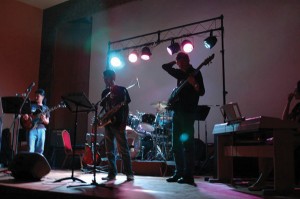 On 16th, a Nepal Bandh day, Kathmandu Jazz Conservatory gave us another jazzy evening. Kathmandu Jazz Conservatory, a jazz school at Jhamsikhel, organized a fund raising concert for KJC scholarship fund.
On 16th, a Nepal Bandh day, Kathmandu Jazz Conservatory gave us another jazzy evening. Kathmandu Jazz Conservatory, a jazz school at Jhamsikhel, organized a fund raising concert for KJC scholarship fund.